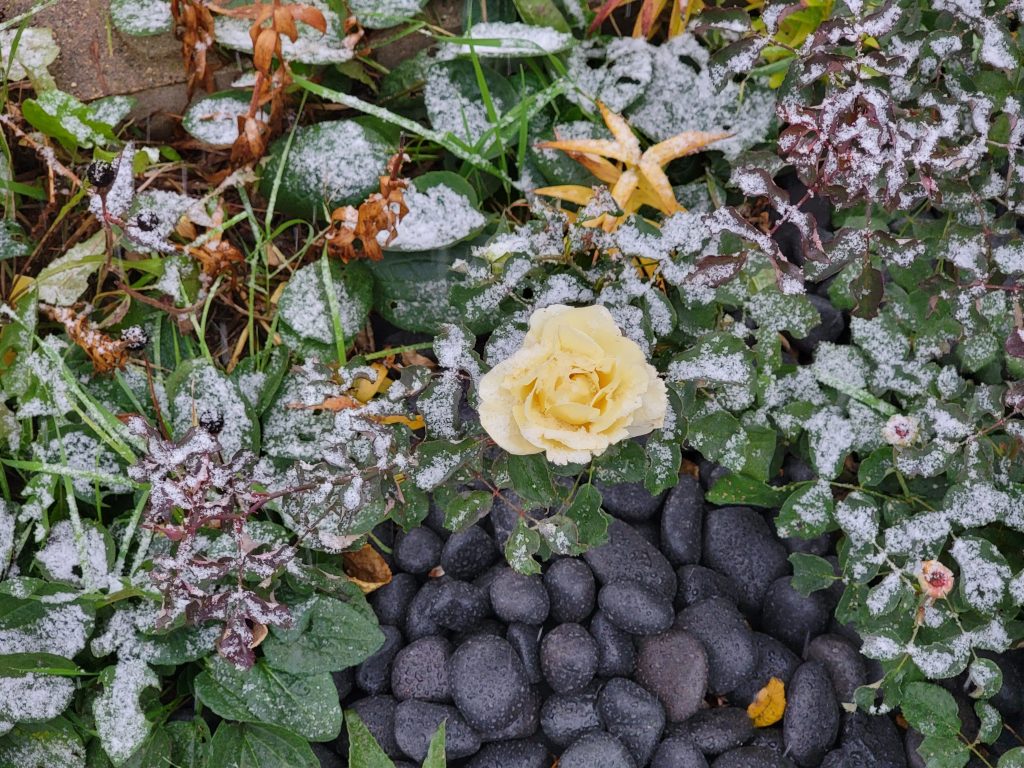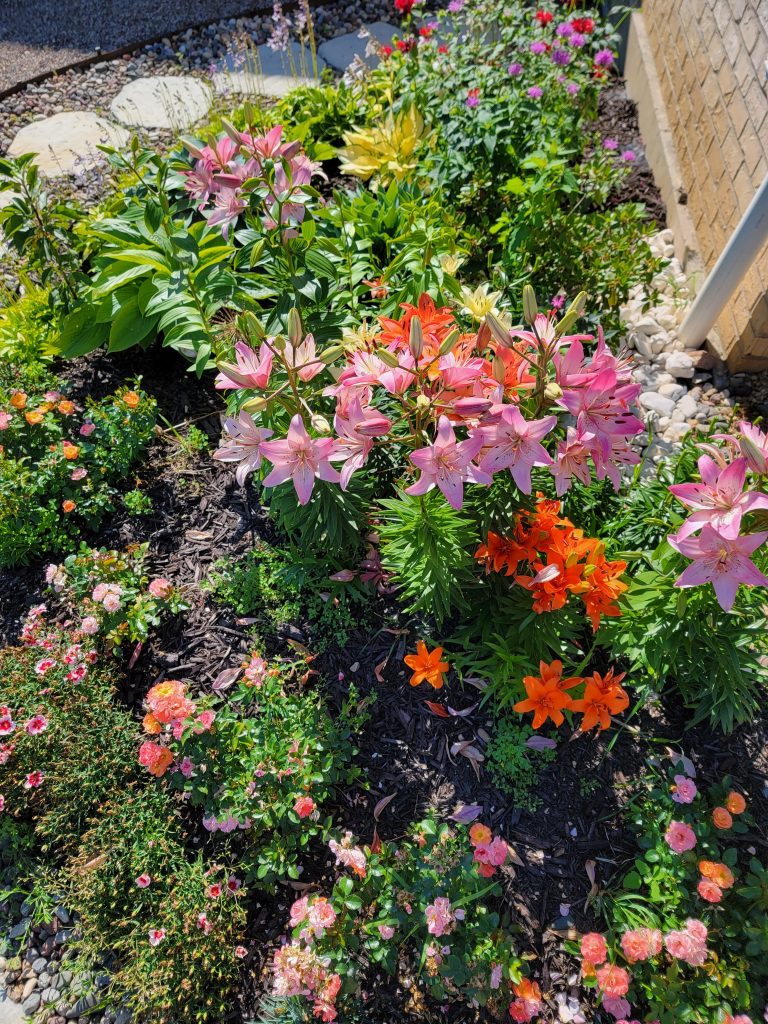For various reasons, I spent more of 2022 at the family farm than I had been planning. It is, undeniably, not a bad place to be held up. At least for three seasons of the year. There is good cycling. Lots of tools for projects. A well-staffed kitchen. Plenty of space. And above all, gardens.
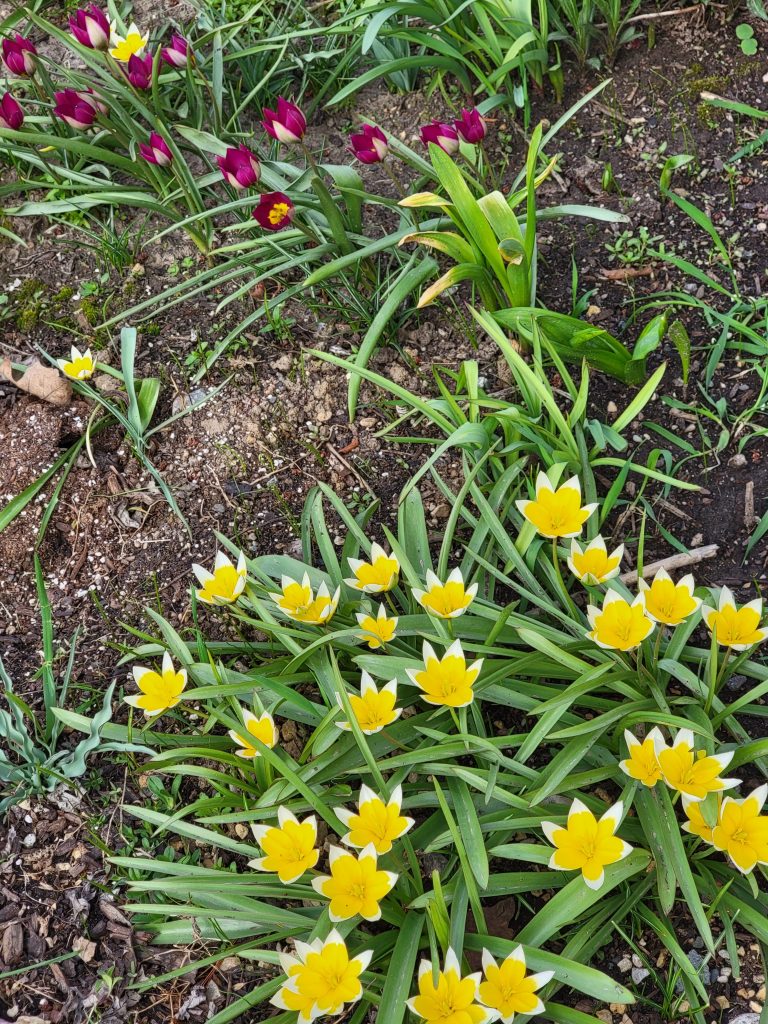
I have been gardening since some blurry point fairly early in my childhood. I had my own little garden growing up, mostly vegetables. It got a bit messy, but did well. I absolutely loved seed catalogs in winter. But only recently have I had the personal resources to throw at it fully. In the past, two of the most important gardening months here, May and September, were extremely busy times at school. And while a few packets of seeds are cheap, quality landscaping materials, tools, and potted plants were expensive. Those obstacles are less of a problem now. I have also made a point of seeing some of the world’s best gardens in my travels, and they’ve inspired me as well, opening my mind more to the possibly of gardens for beauty and not just vegetables.
Kelly’s Garden has become my gardening magnum opus. It was started not long after Kelly’s death as a memorial garden, nestled in the most secluded part of the yard, sheltered from the noise of the road, partially shaded, and yet with a nice view from atop a retaining wall across the main backyard’s vegetable gardens, and the woods beyond. A nice place to sit. At the heart is a Japanese style rock garden, with mathematical curves defining two corner garden beds and a semicircular entrance. This year, it got bigger.
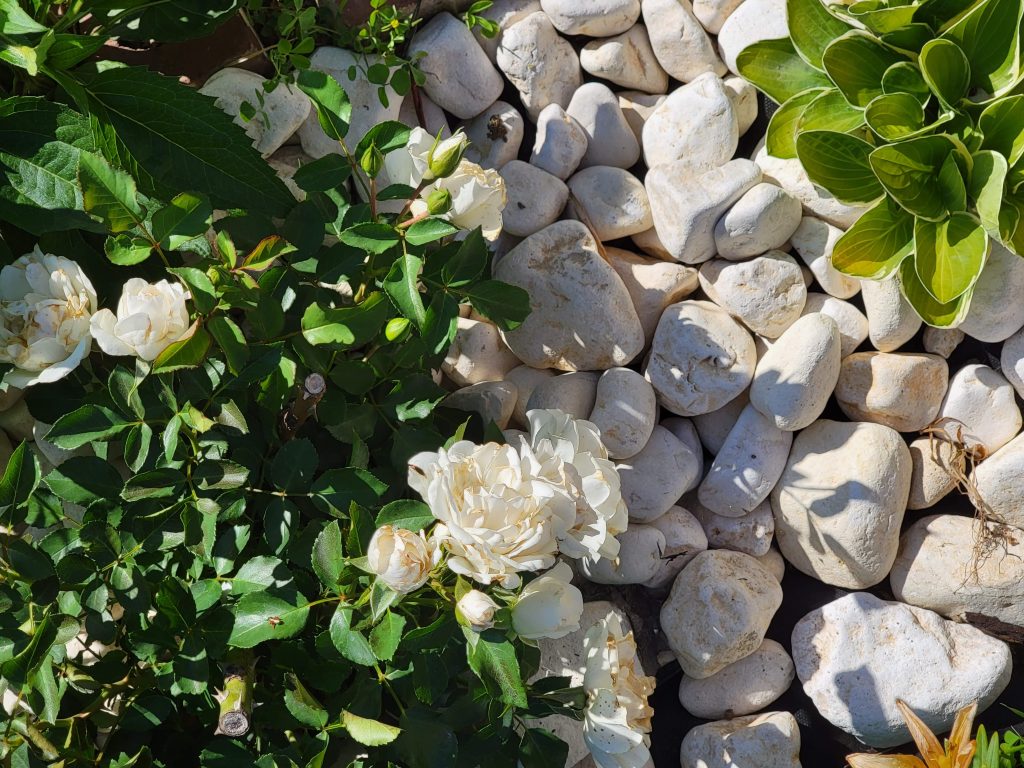
Roses were the starting point. I had previously been disdainful of their kind as too much hassle, but my eye was drawn by the description of two ground cover roses that seemed to fill the need I had for a flower below the lilies. I so loved the Peach Drift Rose (as did the Japanese beetles) that I decided to order a half dozen more. And I must say, the lilies, dianthus, and roses together now making a stunning, surprisingly long-lasting display.
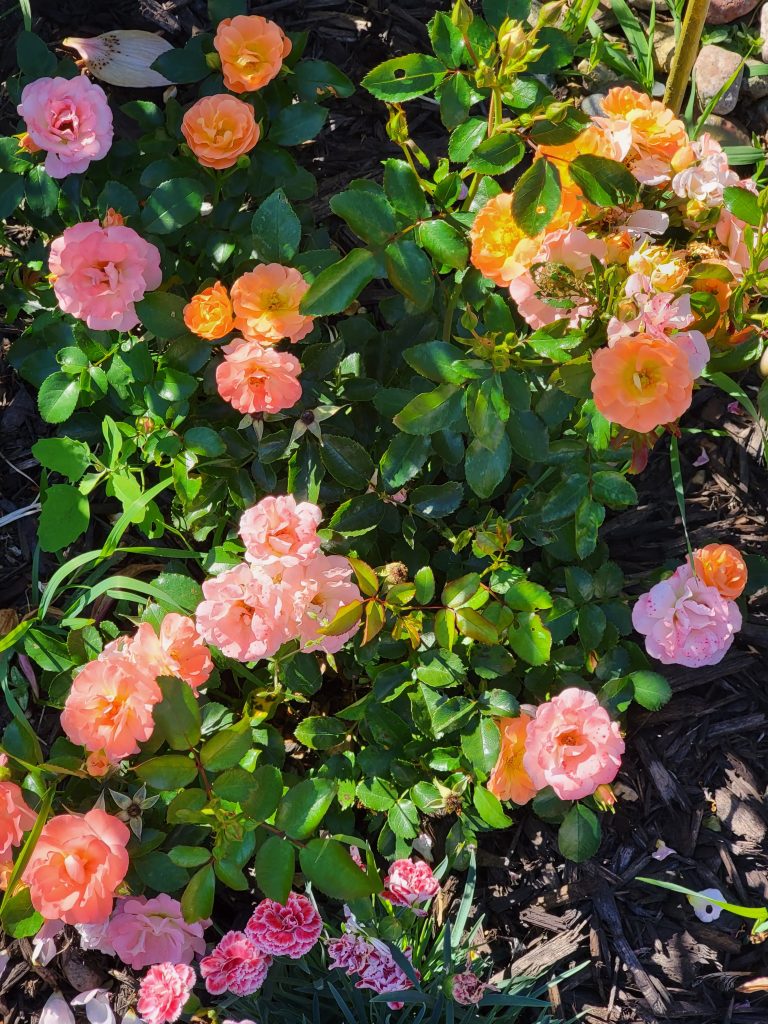
The roses did quite well for their first year, both flowering and growing out immensely. There’s a secret to that: manure. Particularly, two-year-aged horse manure. I used it mixed with potting soil in all of my main plantings this year and everything loved it. That shit is amazing. I also took the trouble, with the help of my mom, to finally properly mulch everything, which helped a good bit as well holding water in and weeds down. And even though this late summer was quite dry, me being home meant I was around to water things every day.
10 minutes of watering in the garden is a really nice way to take a break from work.
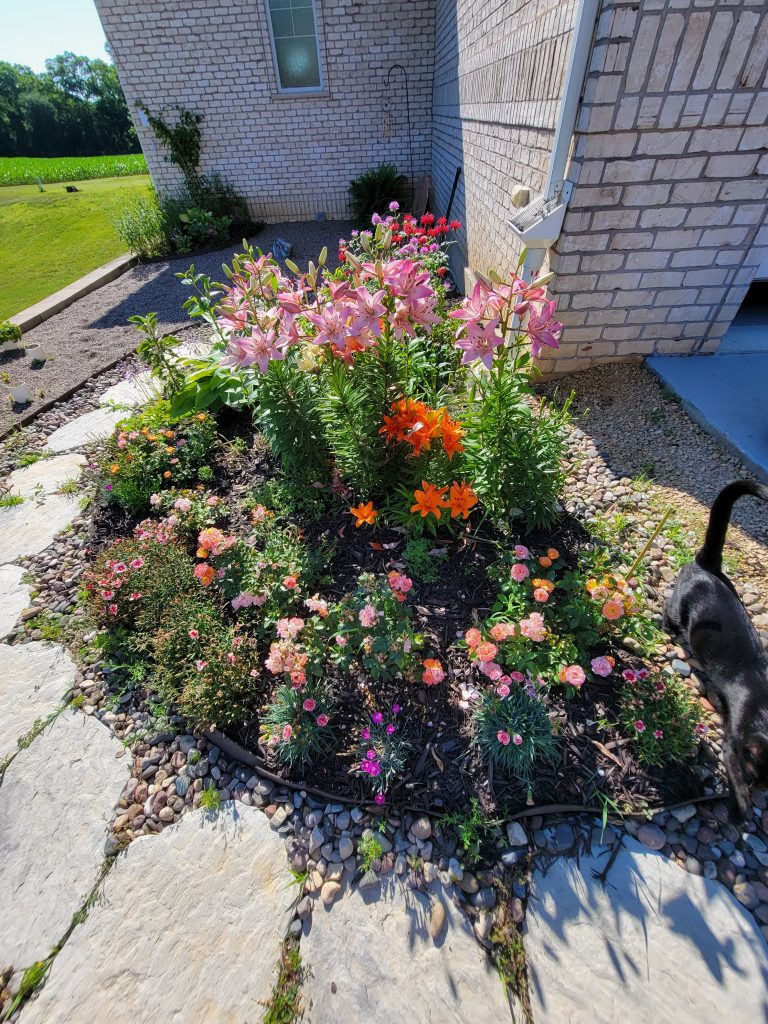
Of course, the landscaping cloth + mulch + perennial plants combination is all built around the idea of having gardens that can, once established, be relatively low maintenance. The key phrase is ‘once established.’ It takes a couple of years of letting things grow out and rearranging to get a garden going. So don’t judge the pictures too harshly yet.
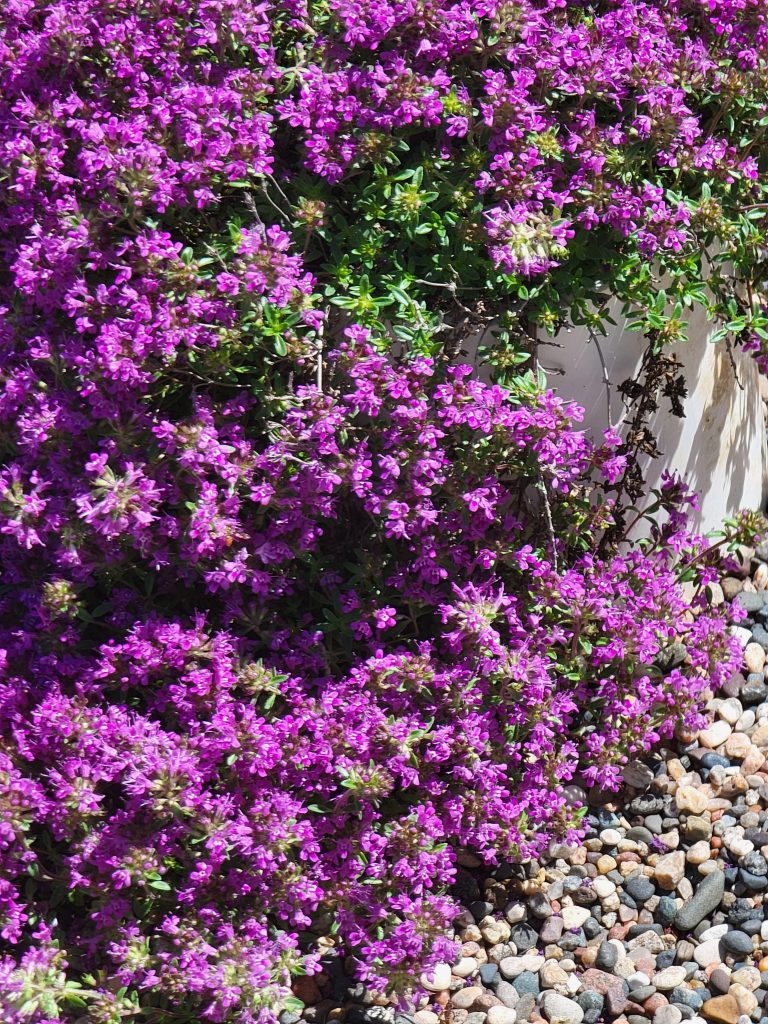
There was lots more in Kelly’s garden. A brunnera added and some hosta moving. More dianthus. Dividing the fern. More thyme in the little pvc ‘islands’ of the rock garden.
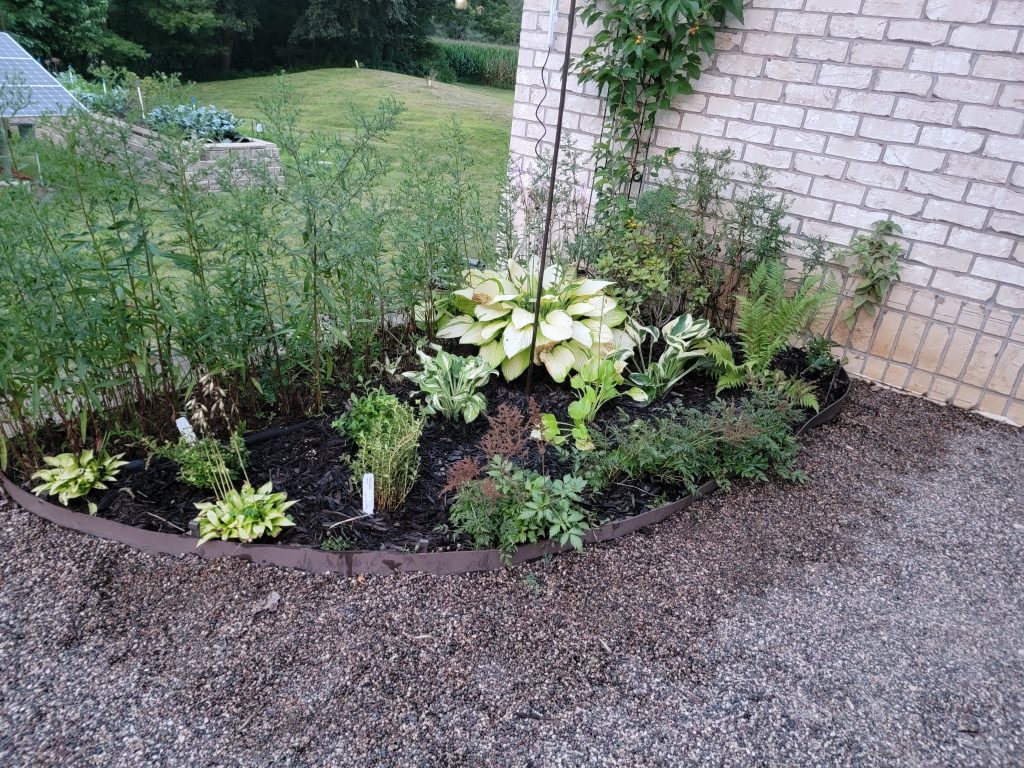
One back corner got a new theme: berries. It has a lovely American bittersweet vine with orange berries that provide a splash of color through the winter. Upon seeing a nice cultivar of wintergreen, I decided to mix that with some lingonberries and a dwarf blueberry to get a neat berry-themed section. I personally feel that too many people overemphasize the importance of flowers in a garden. Most flowers last only days, while foliage and berries can last months. This section also had one of the rhododendrons moved into it, so it will also be an acid-loving plant section.
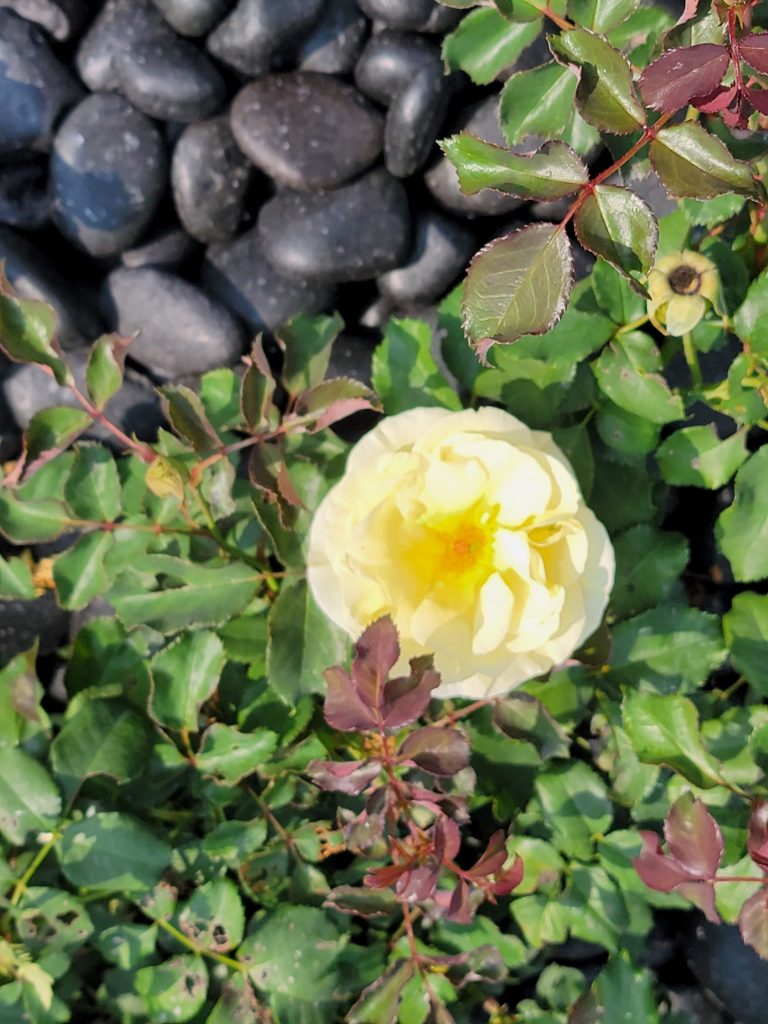
But the main work was the expansion of the ‘outer wing’ of the entry path. It had been a mix of poor grass and some black-eyed susans. Now it is a mix of roses, echinacea, irises, lilies, and black eyed susans. Here, instead of mulch there is black river stone, and it looks stunning. I also planted some red tulips, but as full size tulips here have always been destroyed by moles and voles, I don’t have my hopes up too much. Maybe the magical manure will help them win out. I am very, very excited to see how this garden turns out next year.
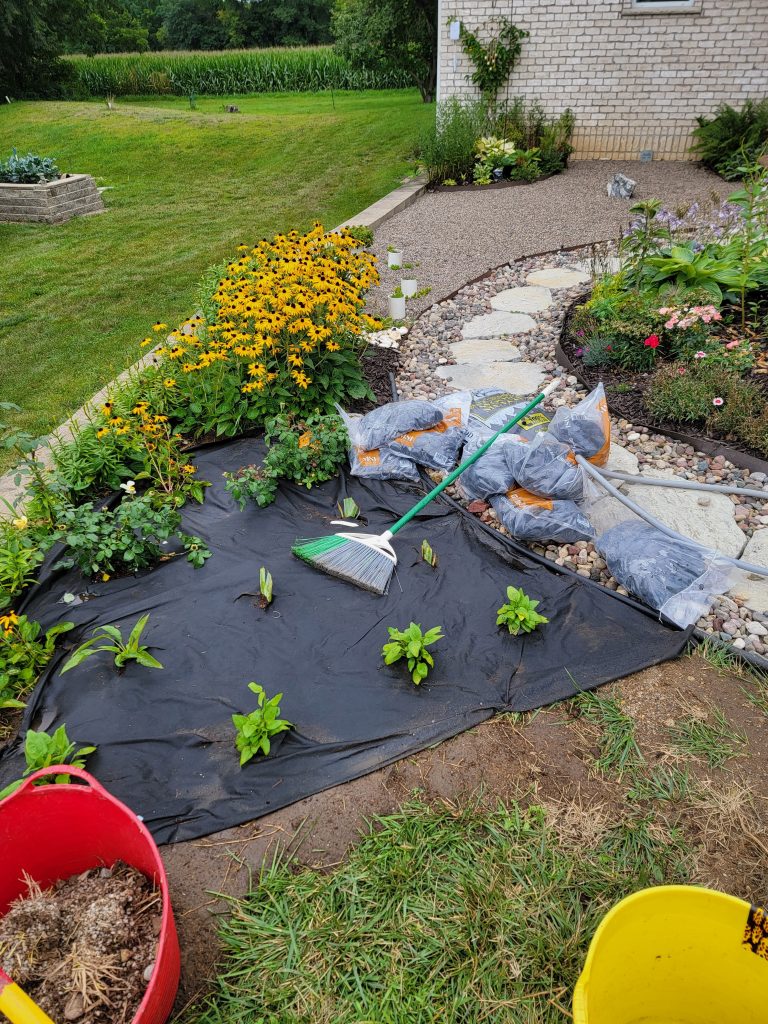
One, slightly more worrying addition, a trumpet vine. This trumpet vine had been languishing unhappily in front of the house. I moved it midsummer to the base of the retaining wall, and it promptly exploded from a little hand-sized plant into a human-sized wall of leaves that in future years may well be in danger of swallowing the house. We shall see. There are also more hosta filled out between the vine and the main rear hosta garden.
Kelly’s garden is meant to be the primary ornamental garden, but near in rivalry for my attentions are my actions on all my prairie, native, pollinator and wildlife-friendly plantings.
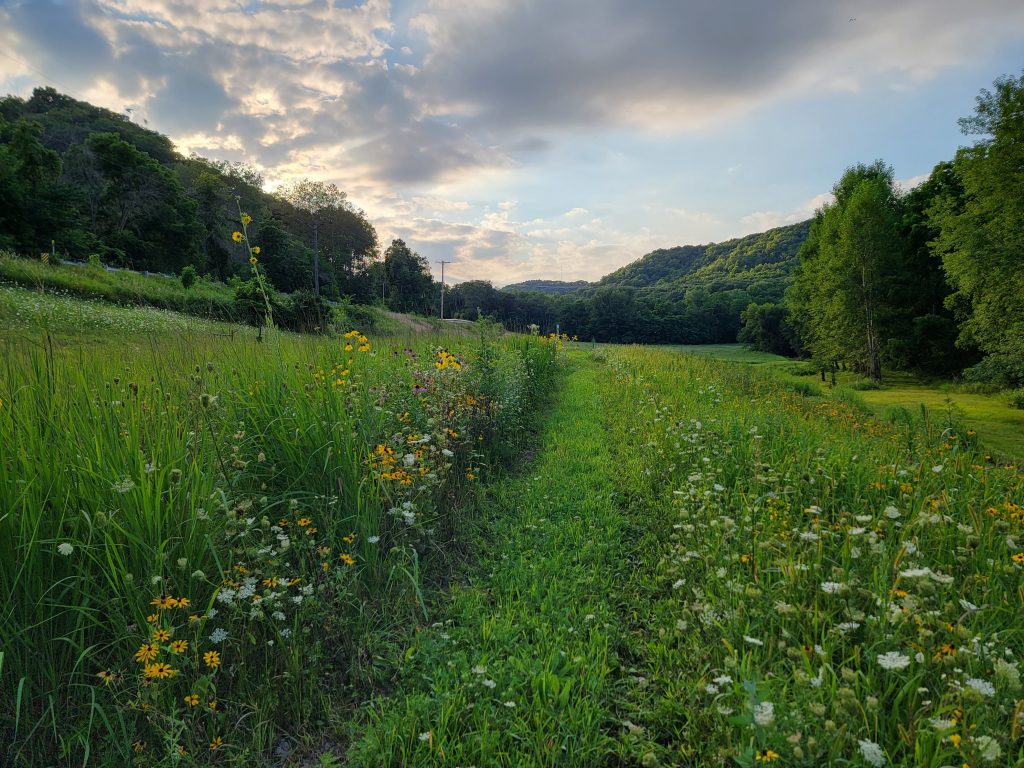
The biggest of them, literally, is the expansion of the prairie west of the barn. The older clay prairie section is doing amazingly, and this new section was a success in that it was not overrun by weeds. It takes years for native plants to grow out, so only a few flowers in its first year, but signs of many beginnings there.
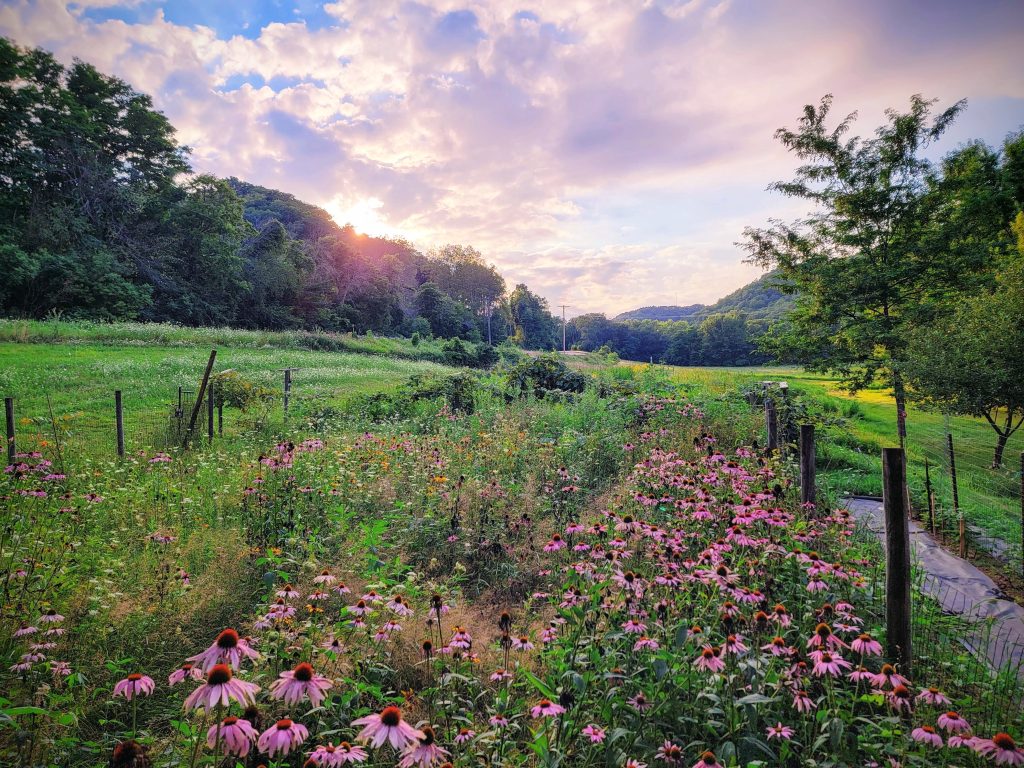
Also, it is already succeeding admirably on the wildlife front. While hand pulling weeds at one point, I nearly dove straight into a large yellow and black garden spider. It is not dangerous in the slightest, unless one is an insect. There’s some new steeplebush planted near there too, next to a drainage culvert.
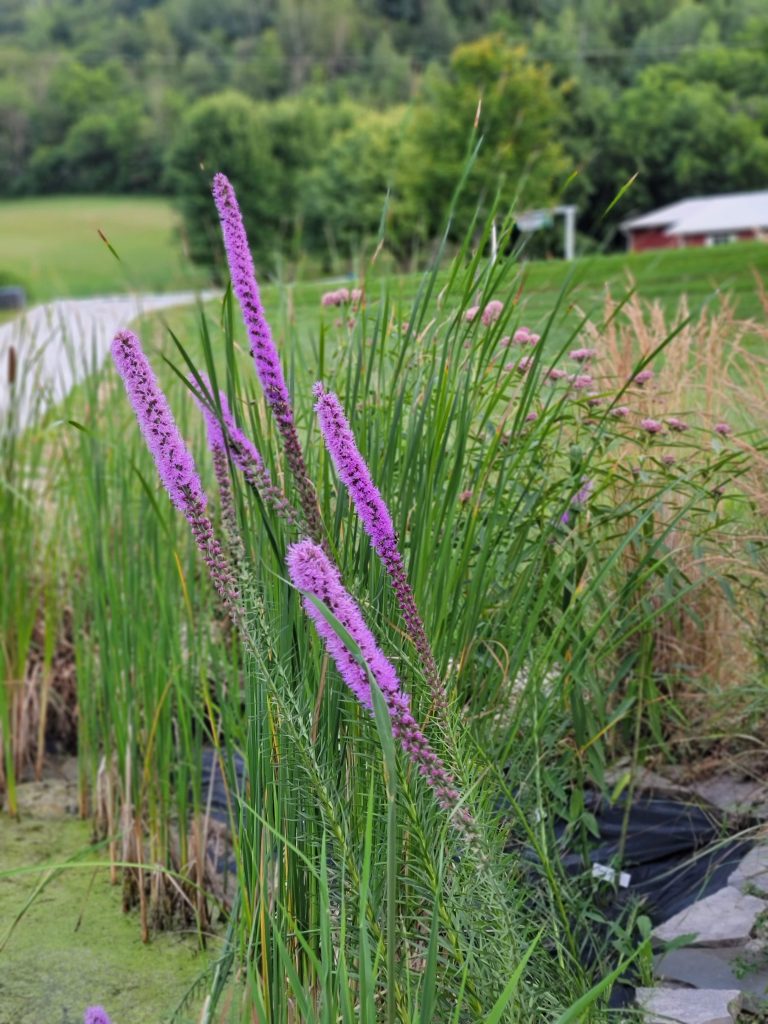
The front yard pond garden, which is very popular with birds, got a number of additions this year. A new Minnesota prairie grass cultivar called Golden Sunset has me excited, but for looks you can’t beat the irises I transplanted (which I had started from seed), along with the bareroot Prairie Blazing Star and Rose Milkweed plantings this spring. Both grew as tall as I am in their first year and were loaded with flowers, bees, and butterflies. The manure is likely a major source of the success, although perhaps also the hard work of Prairie Moon Nursery. Some more echinacea are there as well, and a fall-planted Queen of the Prairie which won’t show itself until next year. In summary: that garden is looking great as well.
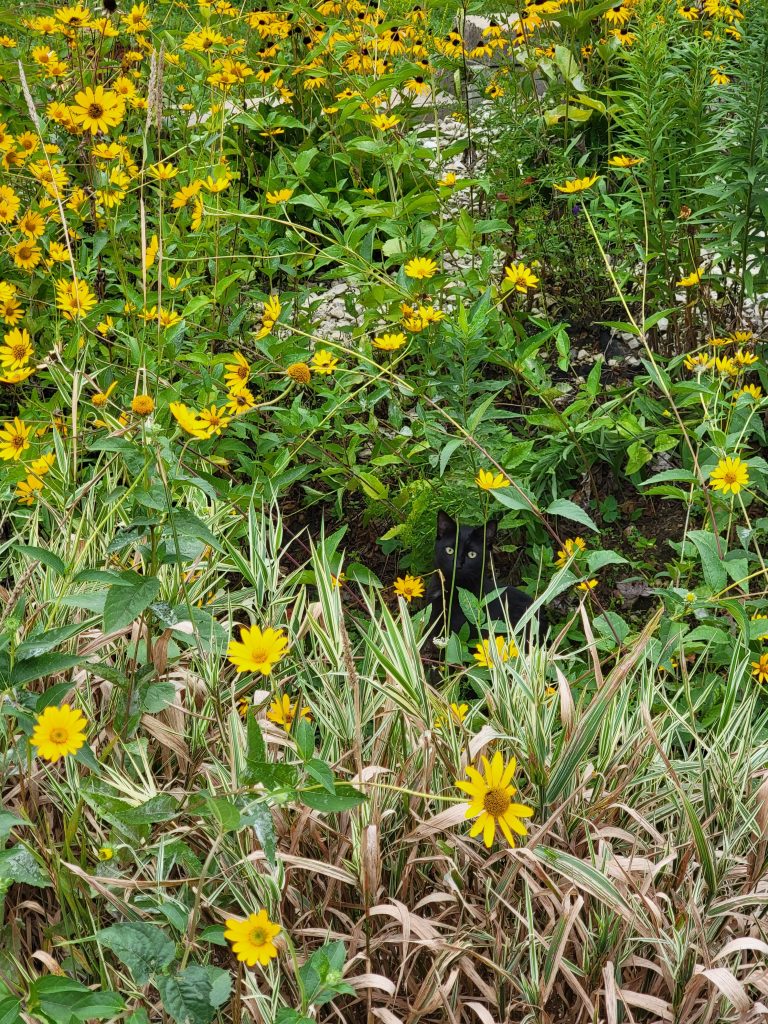
My other semi-ornamental native planting, the driveway rain garden, needed some work as well, but didn’t get much attention until the fall. The main story here is that the Early Sunflower, a perennial, has continued its relentless reseeding and now controls about half the rain garden. I am not complaining. It makes a lovely wall of drought-tolerant blossoms that bloom for almost three months. To my surprise, the strawberries I threw in there are also are thriving.
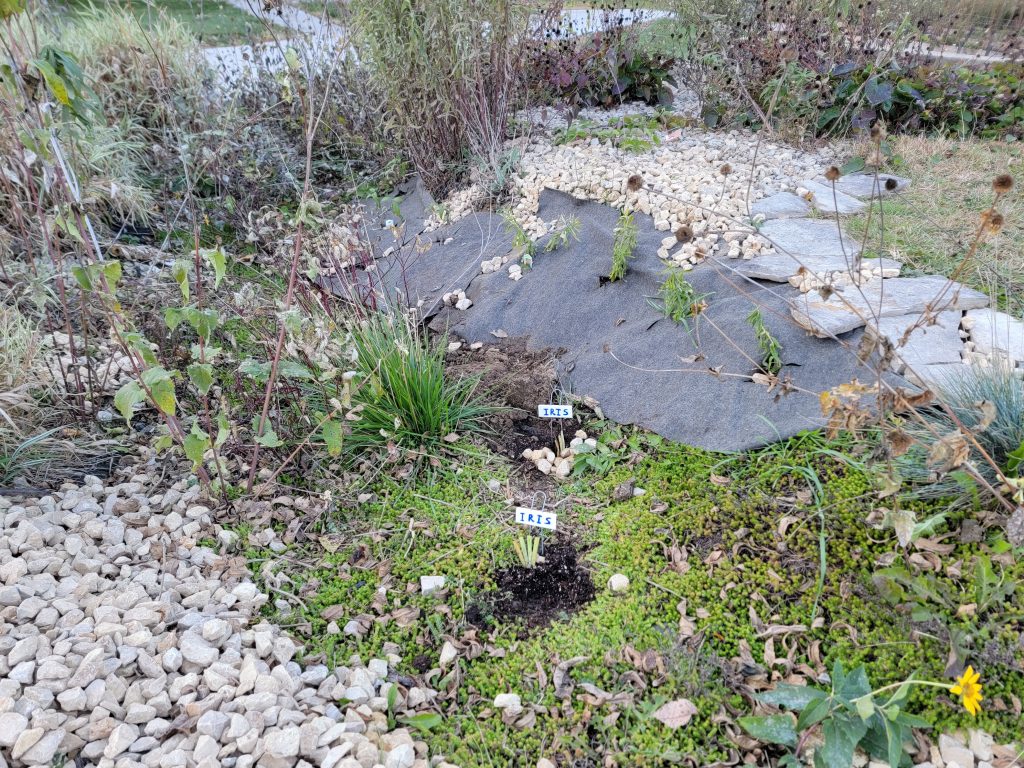
Unfortunately the yarrow all died, reasons unknown, so I had to fill in. More irises, perennial Showy Sunflowers, two Michigan Lilies, a couple of butterfly weed plants, and a large yellow indigo are the additions there. Will have to wait and see next year to see how they do. More landscaping cloth and limestone there to try and make things neater.
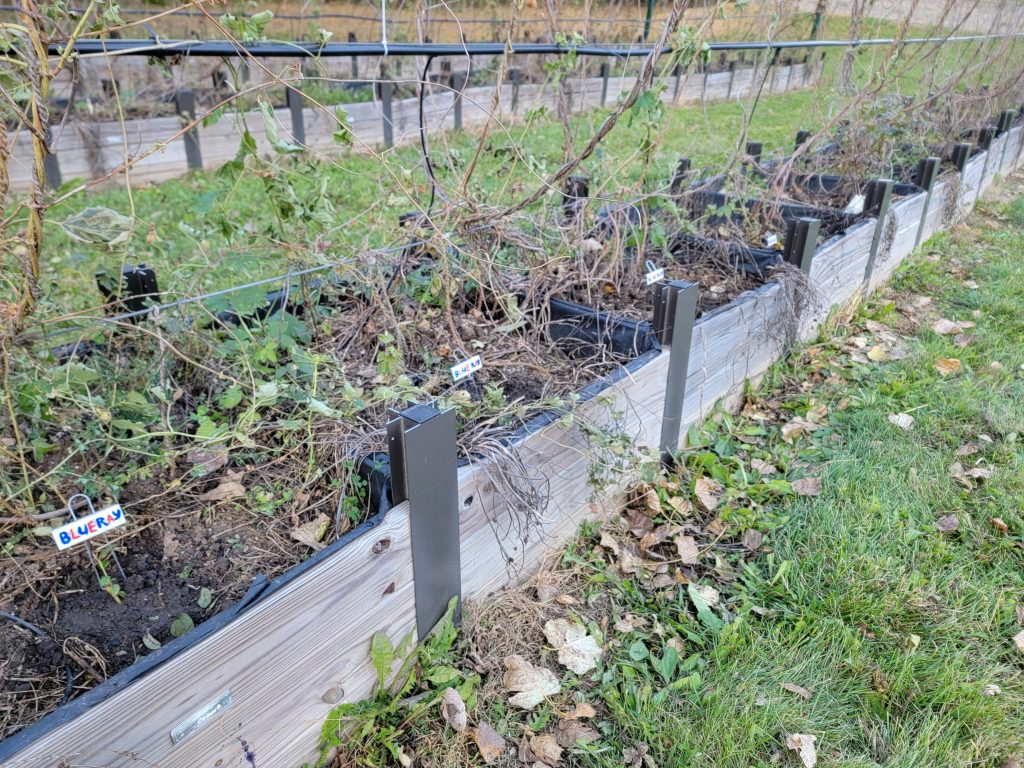
One less-ornamental thing I was much excited by was a dozen blueberries. Tiny seedlings, that arrived in the autumn. I planted these in dad’s hops planters with the simple argument that he has way more hops than he ever can do anything with, and unlike hops, he actually eats blueberries. I am expecting a fairly large loss rate among these fragile young plants, but given a few years we may have tons of berries (in addition to two blueberries planted this spring, and one from last year, near the raised garden).
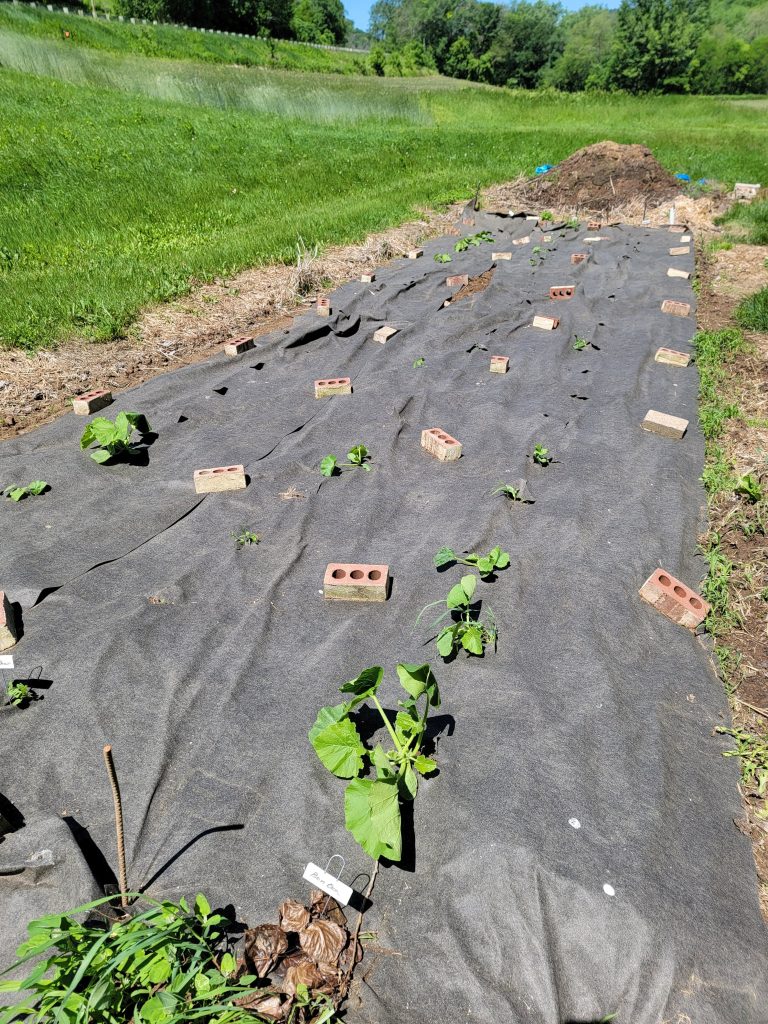
I won’t really go much into this year’s annual vegetable gardens, except to say we were overwhelmed with tomatoes, pumpkins, and broccoli. It wasn’t the most extensive possible garden, as I was gone in the late spring and mom was down from a surgery, but still it was successful.
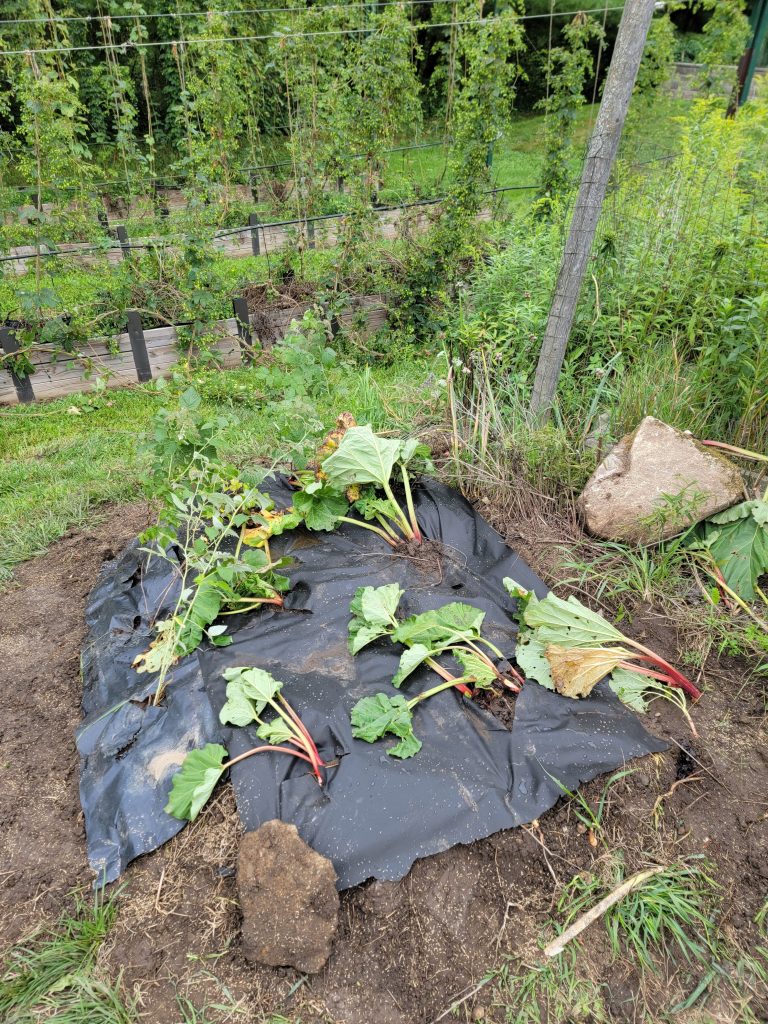
There was one perennial change to the raised garden bed, which was the removal of the massive, sprawling rhubarb. It was taking up valuable space, and rhubarb can survive in much less elevated circumstances than the raised garden. Don’t worry, the rhubarb will likely carry on. I divided it into about ten different pieces and leveled out a section near the chicken coop garden to let it sprawl, supported by landscaping cloth and a few raspberry plants.
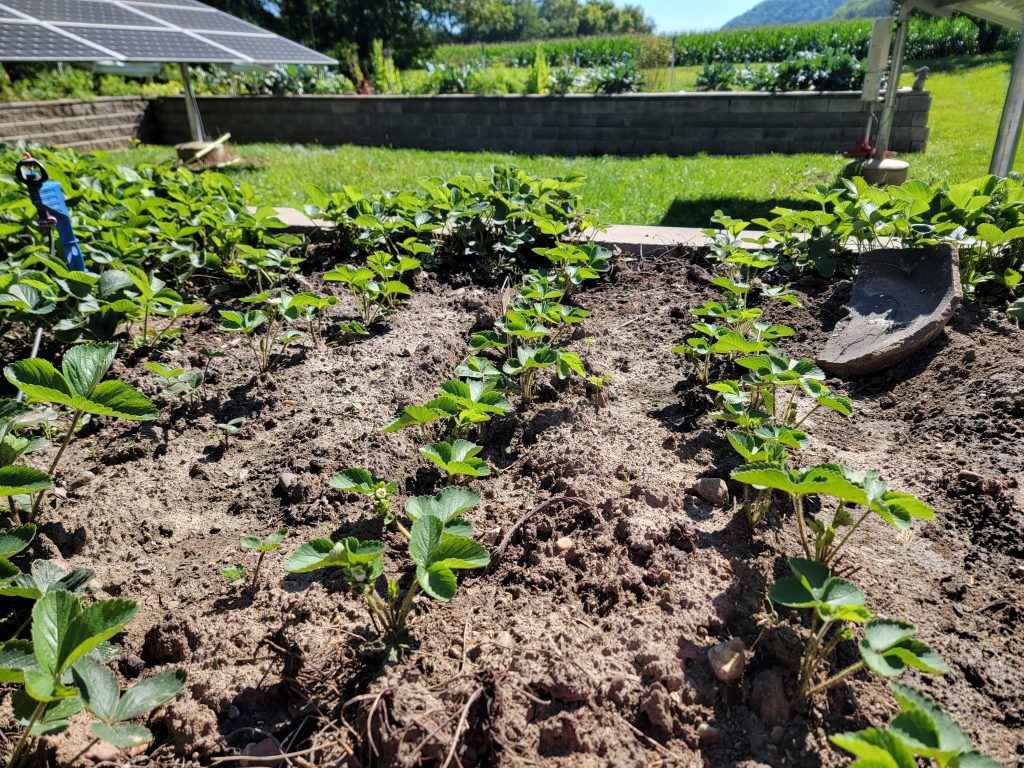
In the place of the rhubarb I planted 25 Cavendish strawberries, a variety I can recommend. They were planted in August, but to my surprise they decided to flower and make fruit, so we had strawberries harvested into October, a first for me. Manure is likely the explanation again. Actually the existing strawberry patch looked quite unhappy this spring. It seems a disease passed through, but some fertilizing later and the numerous surviving plants looked very happy this fall.

Speaking of fruit, due to the great dad-killed everything with hercide/pesticide thing from two years ago, we had a need to replenish the barn garden’s raspberry patch. I ordered five of a New Zealand variety and my mom’s friend Clare sent over a large batch of runners from her own patch of some everbearing kind, and so we should be back to having more raspberries than we know what to do with soon.
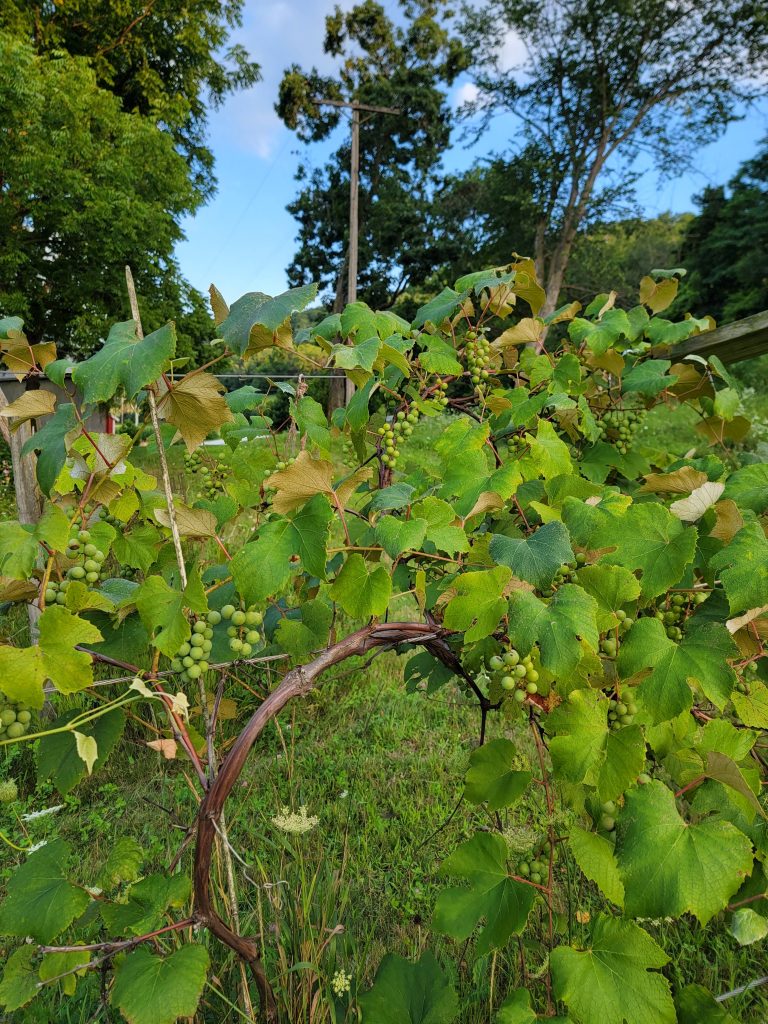
Actually this year we had more grapes than we knew what to do with. Seriously, many bushels of them. The grapes west of the barn were very happy this year, for the first time, and the old reliable Bluebells near the house were thriving as well. Apparently it was just a good year for grapes in general as the wild grapes here were also going crazy. It was also a good year for apples. My thought as to why is that late frosts last year killed many of the blossoms on these plants, preventing them fruiting much last year, and meaning they had extra energy stored up for this year.
I don’t plan to be around much next year, so I my plans are mostly for garden maintenance when I am around. I do have one major plan which is a number of new fruit trees coming. Unfortunately we lost a good number of young fruit trees last winter. I believe it was the combination of long, late summer drought and then cold winter. So a major part of my plan for next year is to assure that all of the young trees here get well watered in the late summer, a more difficult task since they are farther from the nearest water spigots.
I spent really quite a lot of time on gardens this year, and it was time well spent.
